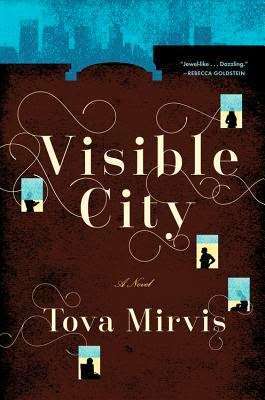Visible City
Tova Mirvis
Houghton Mifflin Harcourt
ISBN: 978-0-544-04774-7
Despite living in a city of over eight million people, the characters in Tova Mirvis’s recently released novel, Visible City, feel utterly alone. Set in a New York City neighborhood, Mirvis masterfully weaves the lives of her characters together through random encounters and circumstances.
Nina is a stay-at-home mom of two young children. She once held a promising career as an attorney, but now she battles dissatisfaction and loneliness. She’s married to Jeremy, a real estate lawyer who miserably spends all his hours at the office. Nina entertains herself by spying on her unsuspecting neighbors in the building across the street. Through the window with her young son’s Fisher-Price binoculars, she watches Leon and Claudia spend their evenings together quietly and peacefully. Nina finds their existence idyllic, but she doesn’t realize, they are as lonely as she and Jeremy.
She had tried to escape her own life by immersing herself inside the lives of others. If she didn’t seek refuge in other people’s lives, what would she finally see?
Leon is a psychiatrist. Claudia is an art history professor, but her life’s passion focuses on the work of stained glass artist John LaFarge. Specifically, she is convinced that one of his greatest masterpieces is missing and she is desperate to find it. The couple’s young adult daughter Emma has recently moved back in with them while recovering from a foot injury. Emma sits at a crossroads in her life and searches for direction, unsure of her fiancé, her education, and her future.
Over the course of a few days, the criss-crossing of the characters’ lives begins. Nina meets Leon at a café. Jeremy meets Claudia at the library. Emma begins babysitting Nina’s children. The merest interaction with a stranger on a street corner proves pivotal. With a passel of other fascinating characters, Mirvis creates a series of events that leads to a climactic and unexpected plot twist.
At its core, this story is about relationships. Relationships are difficult and messy and require incredible amounts of work to sustain. What ties all of these characters together is an overarching sense of loneliness and lack of purpose. Near the end of the story, when all seems lost, Leon contemplates the state of his marriage.
For how long had he and Claudia mistaken silence for companionship, how long had loneliness been dressed up to look like anything but? Now that he felt the loneliness, it was hard to bear for a single moment, yet he had borne it unknowingly all these years.
Why do people remain in the rut of an isolated existence? Claudia, too, ponders their predicament.
She had once conjured a city that opened itself up, the streets leading to wooded trails that would take her into green pastures, but those had closed down not because of the noise of the streets but the sadness inside her. So many people stayed where they were because they thought that was the only option.
Georgia’s Cakes, a popular café, plays a prominent role in the novel. In this story, cake is often portrayed as a panacea for the loneliness. I feel the cake represented the characters’ longing and search for satisfaction and/or self-indulgent guilty pleasures.
Claudia’s search for the missing LaFarge window represents the human desire for purpose and satisfaction. So often, treasures can exist so close to us, but they remain hidden. They may be there all along, yet we never see them. A wall blocks our view – a wall that we would knock down, if only we knew how or had that much motivation.
Visible City is a beautifully-written and poignant novel. Highly recommended for readers who enjoy literary fiction with strong interesting characters.

